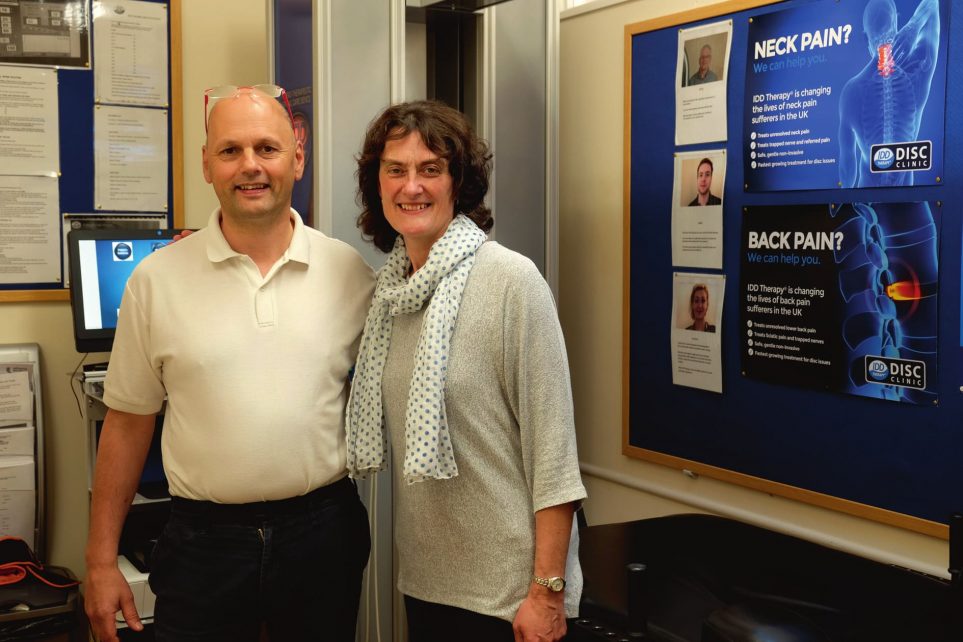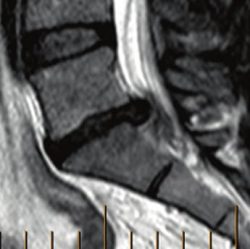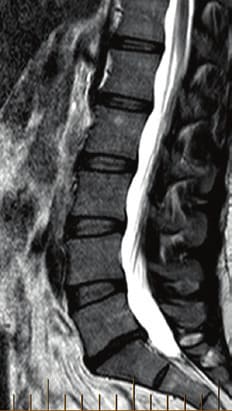Heather the Runner
Posted by Phil Heler on July 25, 2020Keen Peak District runner Heather has unhappy memories of her father’s troubled recovery from a back operation. So when she suffered a crippling slipped disc, surgery was very much a last resort.
Fortunately it’s an option she won’t have to face after being put back on her feet by a high-tech treatment that offers a non-invasive alternative to the surgeon’s knife.
Longnor-based Heather is one of a growing list of patients to find relief from serious back pain in the IDD Therapy provided at Buxton Osteopathy Clinic. It’s the only centre in Derbyshire to offer the treatment, which applies computer-controlled forces at precise angles to gently draw targeted spinal segments apart, relieving pressure on discs and trapped nerves, and easing muscles and ligaments.
Heather’s problems started when she woke up one morning: “I sat up in bed as normal and experienced the most excruciating pain in the back of my left leg – I can’t describe it. I fell to the floor like a ton of bricks.”
Unwilling to go to hospital, she was carried to the car by her husband and driven to a sports therapist. She says: “He managed to relieve the pain, but as soon as I sat back up I was in agony again.”
After a trip to Buxton Cottage Hospital, Heather was dosed with morphine and diazepam and informed that she needed a scan. She spent the next four days in bed. Unable to get a quick appointment with her GP, she went to see another sports therapist in Stockport – who referred her for an MRI scan that revealed a badly slipped disc.
Heather was advised that surgery was necessary, something she was determined to avoid: “Years ago my dad had an operation for a slipped disc and he has never been right since. I didn’t want to risk that.”
Then friends who had been treated by osteopath Phil Heler suggested she consult him. And after examining her scan, he suggested that she try IDD Therapy.
“It was a bit of an emotional rollercoaster at first,” says Heather. “Sometimes I would feel a lot easier, other times I would have pain down my leg.”
But she persevered and after about 20 sessions, she felt much, much better: “I wouldn’t say I’m back to 100% – but I’m certainly at 90%.” Heather has been able to resume running. After taking part in a 5K Bakewell parkrun in April, she has embarked on a programme of gentle jogging, swimming and cycling, and taken up pilates to strengthen the muscles in her back.
A return to fell-running is her next goal: “I can’t run up and down hills like I used to, but I’m determined to get there. Every day gets a little bit easier and I do believe that IDD has helped.”
Heather has also had a second MRI scan, which has revealed the extent of her recovery.
IDD Therapy Success – MRI Scans Before and After Treatment
Before IDD Therapy:
After IDD Therapy:
What our clients think:
IDD Therapy works by applying computer-controlled forces at precise angles to gently draw targeted spinal segments apart, relieving pressure on discs and trapped nerves and easing muscles and ligaments.




